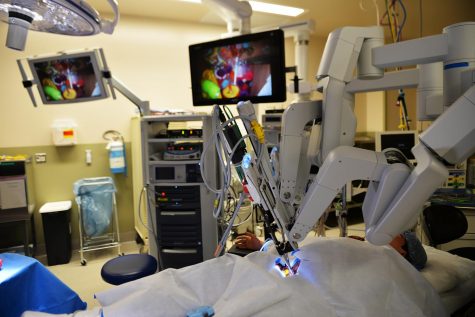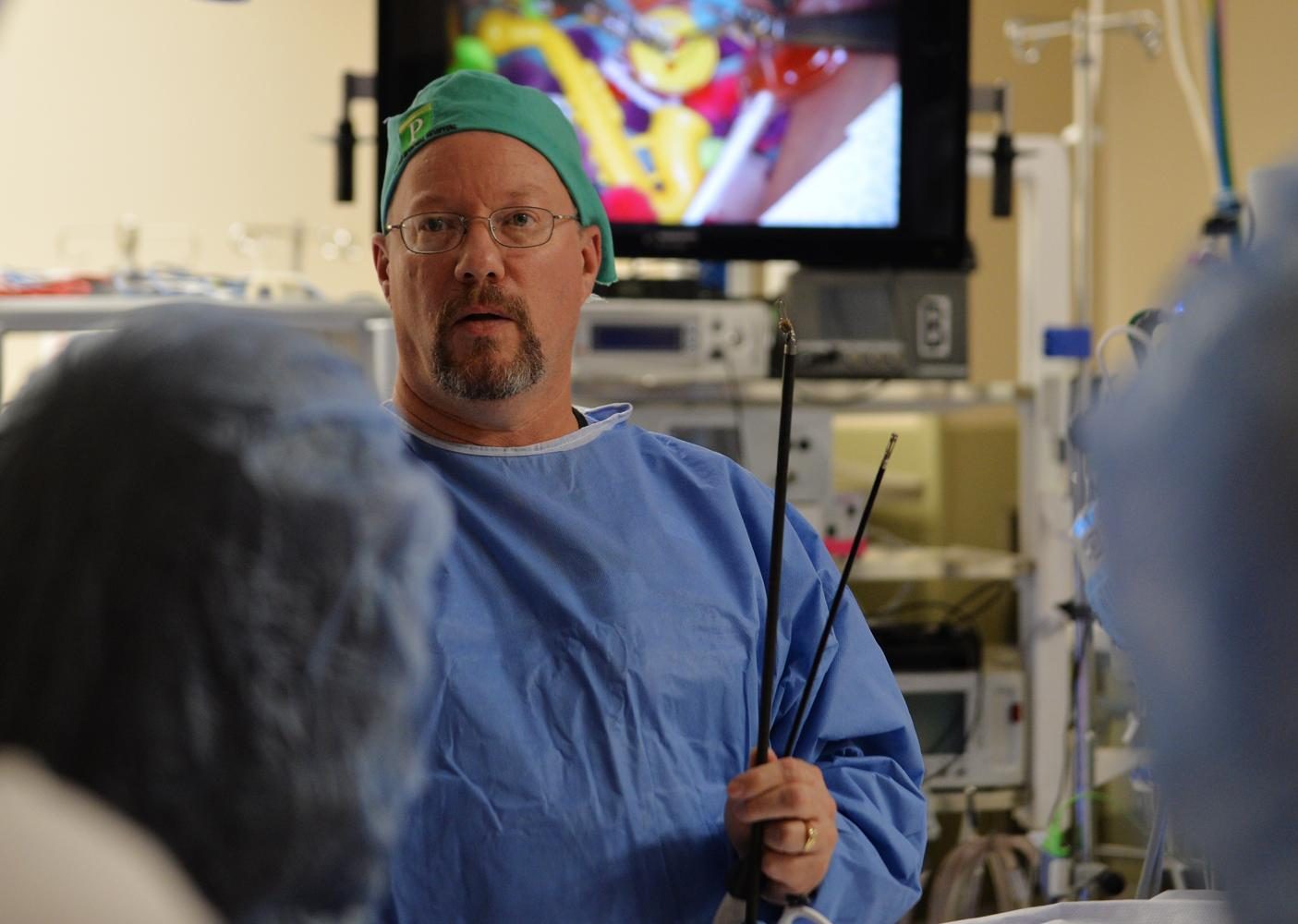The science behind the brain
Neuroscience students and professors support each other through meetings and academic discussions
OLIVER MCKENNA | The Daily Evergreen
Ed Harrich, director of surgical services, talks about the da Vinci surgical robot used Friday at Pullman Regional Hospital.
September 18, 2017
The Neuroscience Club members share a passion over their growing major and help each other succeed in challenging courses, while connecting the community with science.
The club had their first meeting on Aug. 31. President Lindsay Cannon, a senior double majoring in neuroscience and French, outlined the goals and agenda for the year.
“I’m really looking forward to helping underclassmen engage with neuroscience and with their major on campus,” Cannon said, “I think a lot of people reach the first midterm and get intimidated. But it’s really something worth sticking to.”
Throughout the semester, the club will host events such as a faculty showcase, research talks, movie nights, study sessions and Classes Declassified.
Classes Declassified is a meeting in which upperclassmen discuss with underclassmen their required classes. This helps the underclassmen have a better understanding about their professors, the material and course layout.
The former President Halle Weimer, now a graduate student, explained how having these discussions dealing with the new material and professors, the number of students who stayed within in the major went up.

Neuroscience Club members attended a tour of the da Vinci Surgical Robot at Pullman Regional Hospital to learn how it a enhances surgeon’s accuracy and vision of internal body parts while performing operations.
She said students need to maintain a 3.0 GPA to keep neuroscience as a major.
Primas Suwan, a freshman neuroscience major, said she was looking forward to a supportive atmosphere and the helpful insight upperclassmen had to offer because of the difficulty of the major.
“It’s not easy,” Suwan said. “I think it’s going to be helpful to have support.”
The Neuroscience Club visited the Pullman Regional Hospital to explore the uses of the da Vinci Surgical Robot. The surgical robot uses three-dimensional cameras that allows surgeons to have a greater perspective and focused vision of blood vessels that the naked eye cannot see. With the use of controllers, surgeons can make more precise movements, according to Pullman Regional Hospital’s website.
The members practiced using the robot with inanimate objects, such as rubber bands, to understand how the robot functions.
During the faculty showcase, the neuroscience professors talk about their research, classes they teach, their interests and other topics with the students over dinner. It helps students and professors connect, Cannon said.
In the spring, the club raises money to open the Palouse Discovery Science Center to the public for free for an entire day, she said.
“It’s nice to help the kids to be able to understand a little bit about their nervous system and biochemistry,” Cannon said. “And to put these complex systems in simple terms that they can understand is of great value to them.”









